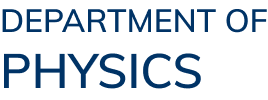Abstract
The formation of two-dimensional moiré superlattices through interlayer twistingintroduces long-range periodic potentials that reconstruct electronic band structures, providingan ideal platform for simulating Hubbard model physics and exploring emergent correlatedquantum phases such as Mott insulators and unconventional superconductivity. Transitionmetal dichalcogenides (TMDs) like WSe2 are ideal for studying twistronics due totheirtunable bandgaps, spin-valley coupling, and enhanced electron-electron interactions. However, direct experimental observation of moiré superlattice influences on electronic structures, along with real-space charge distribution and transport properties governed by moiré effects, remains underexplored.
This dissertation presents a comprehensive investigation into twisted WSe2 moirésuperlattices. Based on multiple characterization techniques including angle-resolvedphotoemission spectroscopy (ARPES), scanning tunneling microscopy (STM), and cryogenicmagneto-transport measurement, we directly probe band structure, charge distributions, andstrongly correlated electron behavior in twisted WSe2 systems.
In Chapter 3, for twisted bilayer WSe2 (tbWSe2), ARPES and STMmeasurementsrevealed the emergence of moiré bands originating from the Γ valley and the correspondingreal-space honeycomb- and kagome-shaped charge distributions, challenging prior predictionsfrom transport experiments of K-valley moiré flat bands. Further comparative analysisdemonstrated valley-dependent lattice relaxation modifications to the electronic structure, indicating that the formation of K-valley flat bands requires enhanced interlayer coupling
In Chapter 4, focusing on twisted double bilayer WSe2 (TDB-WSe2) dominatedbyΓ-valley hole transport, we discovered a correlation-induced half-filling insulating stateandacontinuous metal-insulator transition. Intriguingly, superconducting-like signatures emerged near the half-filling state. Furthermore, we observed an unconventional electronic polarizationemerging from the correlated insulating states in antiparallel interface stacking TDB-WSe2 devices.
